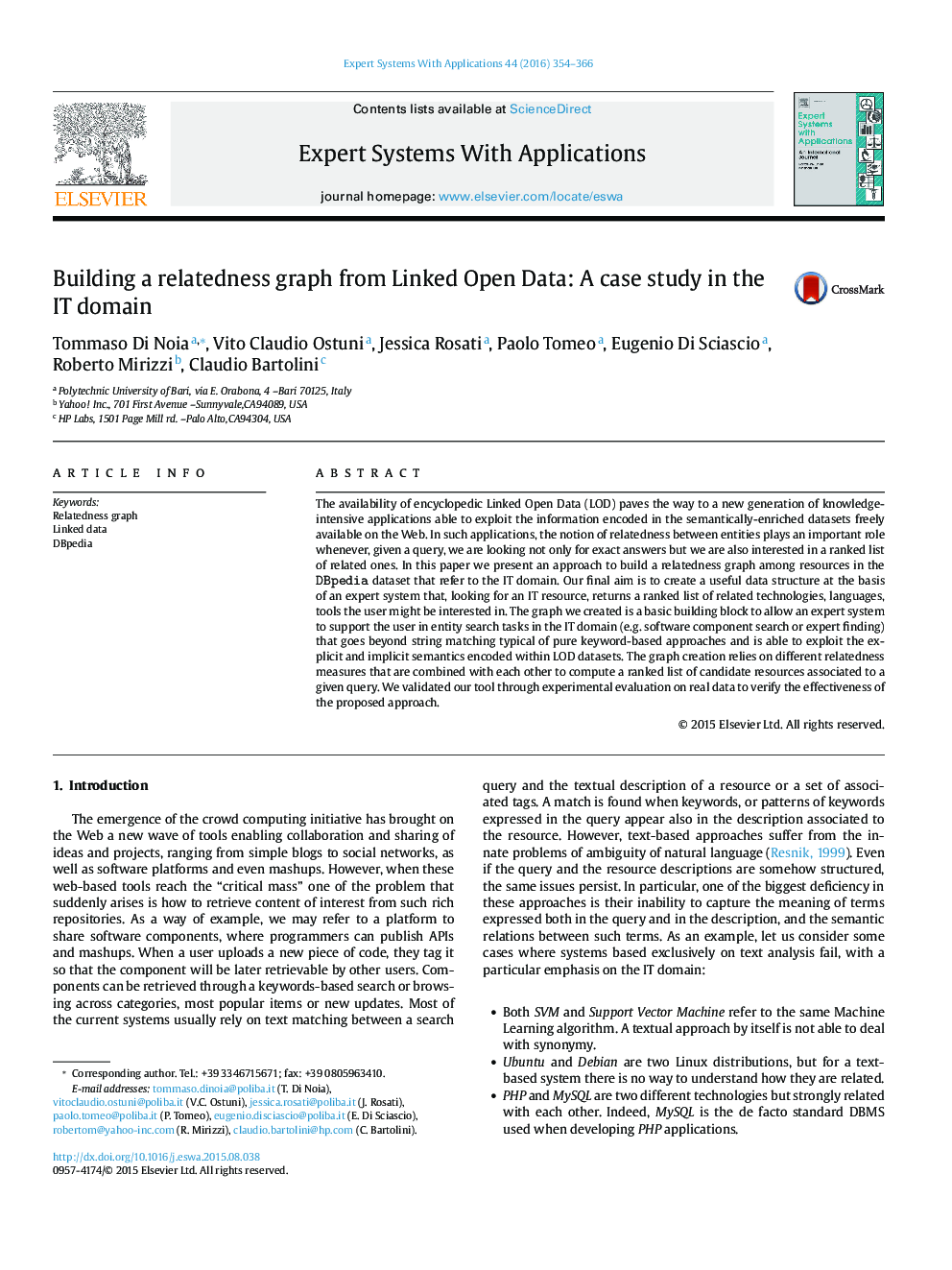| Article ID | Journal | Published Year | Pages | File Type |
|---|---|---|---|---|
| 382048 | Expert Systems with Applications | 2016 | 13 Pages |
•We propose a measure for semantic relatedness among resources in the IT domain.•Statistical, textual and semantic features are used and combined via Learning to Rank.•Construction of a relatedness graph about IT resources on top of DBpedia.•Experiments on real data extracted from job posts validate the approach.
The availability of encyclopedic Linked Open Data (LOD) paves the way to a new generation of knowledge-intensive applications able to exploit the information encoded in the semantically-enriched datasets freely available on the Web. In such applications, the notion of relatedness between entities plays an important role whenever, given a query, we are looking not only for exact answers but we are also interested in a ranked list of related ones. In this paper we present an approach to build a relatedness graph among resources in the DBpedia dataset that refer to the IT domain. Our final aim is to create a useful data structure at the basis of an expert system that, looking for an IT resource, returns a ranked list of related technologies, languages, tools the user might be interested in. The graph we created is a basic building block to allow an expert system to support the user in entity search tasks in the IT domain (e.g. software component search or expert finding) that goes beyond string matching typical of pure keyword-based approaches and is able to exploit the explicit and implicit semantics encoded within LOD datasets. The graph creation relies on different relatedness measures that are combined with each other to compute a ranked list of candidate resources associated to a given query. We validated our tool through experimental evaluation on real data to verify the effectiveness of the proposed approach.
